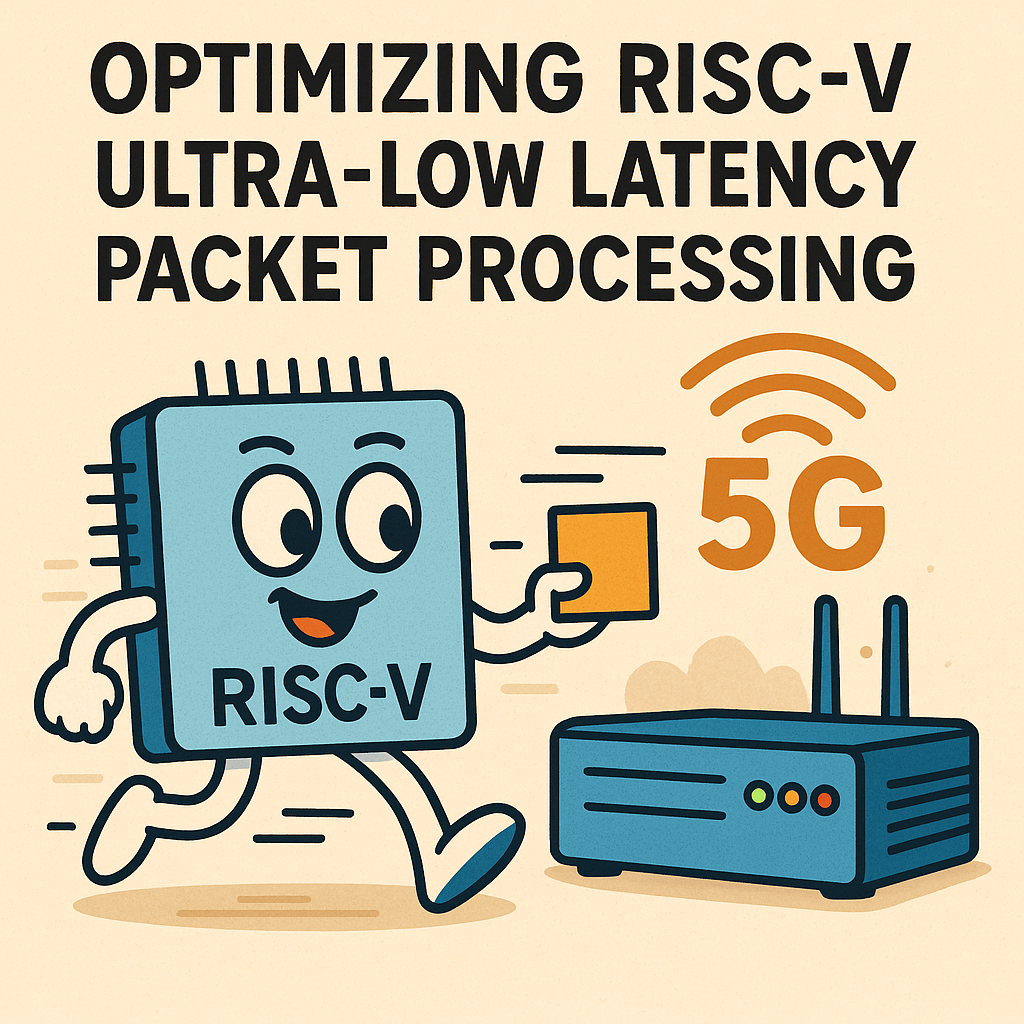Understanding the Need for Ultra-Low Latency in 5G Networks
As the adoption of 5G networks proliferates, the demand for ultra-low latency packet processing becomes increasingly critical. In this context, RISC-V architecture emerges as a promising candidate due to its flexible, open-source nature. However, achieving the required performance metrics poses unique challenges, particularly in the realm of network routers where packet latency can make or break user experience.
Challenges in Packet Processing with RISC-V
Packet processing involves multiple stages, from the initial packet reception to forwarding it through various layers of network protocols. Each stage introduces latency, and in 5G applications, even a few microseconds can lead to significant performance degradation. Typical challenges include:
- Limited Hardware Resources: Many RISC-V implementations are optimized for power efficiency rather than raw performance, which can hinder packet processing capabilities.
- Memory Bandwidth: Ensuring efficient access to memory is paramount. The architecture must support high throughput and low-latency memory accesses to manage the rapid influx of packets.
- Software Optimization: Developing firmware that can leverage the RISC-V architecture effectively requires a deep understanding of both the hardware and the networking stack.
Design Decisions That Matter
The design of a RISC-V based router for 5G networks involves various trade-offs. One of the most critical decisions revolves around the choice of cores. Utilizing a multi-core RISC-V setup can significantly enhance parallel processing capabilities, enabling the router to handle multiple packets simultaneously. However, this introduces complexity in synchronization and data sharing.
Choosing the Right Core Configuration
For ultra-low latency, it’s essential to select RISC-V cores that are not only energy-efficient but also capable of high clock speeds. A heterogeneous core architecture, combining high-performance cores with low-power cores, can be an effective approach. High-performance cores manage the critical path of packet processing while low-power cores handle lower-priority tasks, optimizing overall power consumption.
Memory Hierarchy Optimization
A robust memory hierarchy is crucial. Implementing local caches for frequently accessed data can dramatically reduce access times. RISC-V allows for customizable cache designs; thus, engineers can tailor cache sizes and policies to the specific workload characteristics of packet processing. For instance, a write-back cache policy may prove beneficial for temporary data storage in packet forwarding operations, minimizing the latency associated with memory writes.
Algorithmic Enhancements for Packet Processing
Beyond hardware optimizations, firmware and algorithm design play pivotal roles. Using efficient data structures, such as hash tables for routing tables, can drastically reduce lookup times. Additionally, implementing techniques like batching–where multiple packets are processed together–can exploit the inherent parallelism in modern RISC-V designs. This approach minimizes the overhead associated with context switching and can lead to significant latency reductions in high-throughput scenarios.
Leveraging SIMD Instructions
Many RISC-V implementations support SIMD (Single Instruction, Multiple Data) instructions, which can be harnessed for operations such as checksum calculations or packet filtering. By processing multiple data points in a single instruction cycle, these operations can be accelerated, thus contributing to lower packet processing latency.
Real-World Considerations and Trade-offs
In real-world implementations, engineers must consider the cost and complexity of integrating these optimizations. For example, while employing a multi-core design might yield better performance, it also requires sophisticated load balancing mechanisms to prevent any single core from becoming a bottleneck. Additionally, the trade-off between latency and throughput must be carefully managed; optimizing for one can sometimes adversely affect the other.
Moreover, as the network evolves, the flexibility of RISC-V becomes an asset. Firmware can be updated to incorporate new algorithms or optimizations without the need for complete hardware overhauls, allowing for ongoing performance improvements as network demands shift.
Future Directions in RISC-V Packet Processing
Looking ahead, the integration of machine learning algorithms into packet processing could further enhance ultra-low latency applications. By analyzing traffic patterns, routers can dynamically adjust their processing strategies, prioritizing critical packets and optimizing routes in real-time. RISC-V’s extensibility allows for the incorporation of specialized processing units tailored for such tasks, paving the way for intelligent packet processing systems in next-generation 5G networks.



